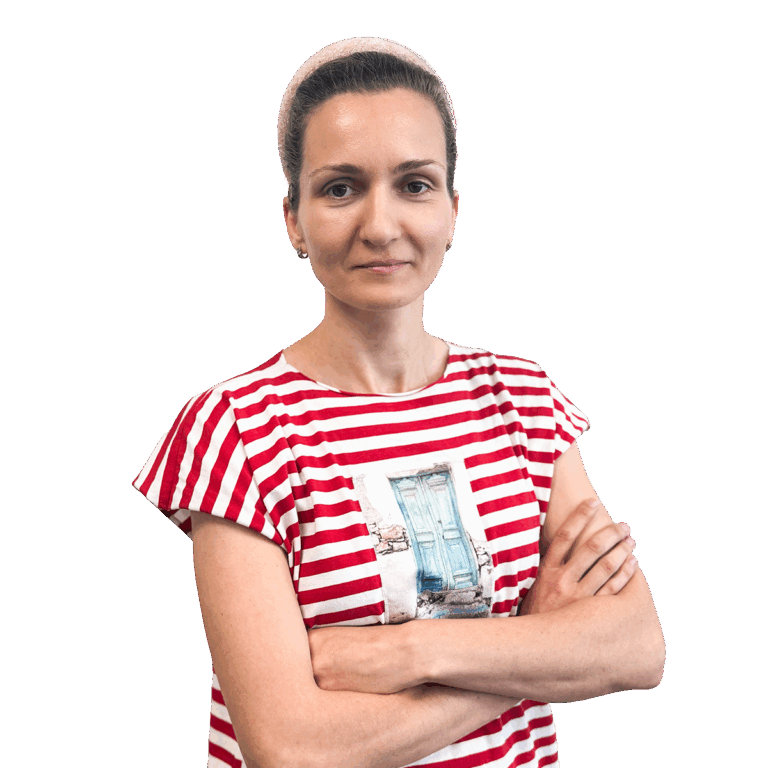DE
- Industries
- Finance
Nearshore software development for finance—secure, scalable, and compliant solutions for banking, payments, and APIs.
- Retail
Retail software development services—e-commerce, POS, logistics, and AI-driven personalization from nearshore engineering teams.
- Manufacturing
Nearshore manufacturing software development—ERP systems, IoT platforms, and automation tools to optimize industrial operations.
- Finance
- What we do
- Services
- Technologies
- Collaboration models
Explore collaboration models customized to your specific needs: Complete nearshoring teams, Local heroes from partners with the nearshoring team, or Mixed tech teams with partners.
- Way of work
Through close collaboration with your business, we create customized solutions aligned with your specific requirements, resulting in sustainable outcomes.
- About Us
- Who we are
We are a full-service nearshoring provider for digital software products, uniquely positioned as a high-quality partner with native-speaking local experts, perfectly aligned with your business needs.
- Meet our team
ProductDock’s experienced team proficient in modern technologies and tools, boasts 15 years of successful projects, collaborating with prominent companies.
- Our locations
We are ProductDock, a full-service nearshoring provider for digital software products, headquartered in Berlin, with engineering hubs in Lisbon, Novi Sad, Banja Luka, and Doboj.
- Why nearshoring
Elevate your business efficiently with our premium full-service software development services that blend nearshore and local expertise to support you throughout your digital product journey.
- Who we are
- Our work
- Career
- Life at ProductDock
We’re all about fostering teamwork, creativity, and empowerment within our team of over 120 incredibly talented experts in modern technologies.
- Open positions
Do you enjoy working on exciting projects and feel rewarded when those efforts are successful? If so, we’d like you to join our team.
- Candidate info guide
How we choose our crew members? We think of you as a member of our crew. We are happy to share our process with you!
- Life at ProductDock
- Newsroom
- News
Stay engaged with our most recent updates and releases, ensuring you are always up-to-date with the latest developments in the dynamic world of ProductDock.
- Events
Expand your expertise through networking with like-minded individuals and engaging in knowledge-sharing sessions at our upcoming events.
- News
- Blog
- Get in touch

11. Jul 2024 •5 minutes read
What does my PO/PM exactly do, I wonder?
Marija Šobot Babić
Product Owner
Navigating the complex business landscape can often feel as challenging as being an octopus, requiring the dexterity of eight arms to meet clients’ diverse demands. It’s more than multitasking; it’s juggling complex relationships, diverse requests, and tight deadlines.
Clients often inhabit a world distant from IT, requiring us to bridge the gap and craft feasible, user-centered solutions. This scenario, common across industries, places Product Managers and Product Owners as the essential link between clients and problem-solving teams.
They’re the bridge, the punching bag absorbing demands, and the visionaries who craft solutions. This role demands a pocketful of skills ready to be deployed at any moment, from communication and empathy to innovative problem-solving. Join me as we explore the dynamic world of Product Managers/Product Owners shaping visions and navigating the creation of solutions.

Unraveling the complexities of PM and PO roles: Exploring the challenges and significance of the roles
In this article, we will explore the complexity of the roles of Product Manager (PM) and Product Owner (PO) in the business world. We will examine how these key roles manage projects, communicate with different teams, and make crucial decisions shaping the product or service.
We will explore their responsibilities, challenges, and how they contribute to achieving project goals, enhancing our understanding of their crucial roles within organizations.
PMs set project goals, sprint goals, or quarterly objectives based on the team’s organizational structure. They turn desires into reality by collaborating with stakeholders, designers, and developers who make the product’s vision tangible.
Furthermore, PMs facilitate communication among all involved stakeholders while the development team crafts solutions for pressing issues. In addition to excellent communication, balancing, sensing, predicting, and analyzing, a PM/PO should also be a true leader.
That’s where excellent potential lies. Remember, a leader works as hard as the team but is also the one who guides, encourages, believes, understands, and constantly learns.
As mentioned, the role of a PO/PM implies the need for constant improvement. During one workshop I attended, we engaged in activities involving consultations with experienced coaches specializing in soft skills.
One of them referred to the role of a PM or PO as “very schizophrenic” – not in a medical sense, of course, but as an analogy to emphasize the intricate complexity and challenges inherent in these positions.
This comparison indicates how diverse the role is, often requiring a delicate balance between different demands, perspectives, and roles. It may involve managing various tasks, interacting with diverse teams and stakeholders, adapting to multiple perspectives and client demands, and constantly adjusting to a dynamic and unpredictable environment. Hence, the analogy of schizophrenia is used to emphasize this role’s complexity, diversity, and demands.
It’s crucial not to forget all those people waiting for information from the PO/PM, anticipating the signal to start finding solutions to the problems the PM has presented to them. They trust their PM at times, while on other occasions, they have doubts. They often think their PM adds complexity to their lives, particularly when the exact importance of the role remains unclear to them.
Trust me, it happens.
A while back, I led a project to develop a financial operations monitoring system tailored for accounting offices. Despite an existing solution, my superiors hastily pushed for modifications. As the project manager, my team and I began implementing the original requirements.
However, pressure from the general manager, a key stakeholder, led to abrupt strategy shifts and even a proposal to repurpose the product for another client. Such changes required extensive refactoring, which wasn’t feasible in a short time, as he requested. Eventually, tensions rose, and my superior clashed with decision-makers. Amidst this turmoil, I faced doubts from my team as I relayed unsettling news about potential job losses.
To address the chaos, I organized a meeting with key stakeholders to provide clarity. While the experience was challenging both professionally and personally, it taught me the importance of self-awareness and team support. Unfortunately, such situations are common in volatile markets, as one colleague aptly noted.
However, I found solace in the guidance of seasoned colleagues, who reassured me and offered invaluable perspectives. Despite no longer working together, our bond remains strong, a testament to enduring professional relationships.
I believe others have also experienced situations where colleagues haven’t understood the complexity of a PO or PM’s work. I’m not alone in this experience; those who work on solutions often think the problem lies with the PM and that we don’t understand each other—this can be a significant issue in communication with colleagues.
Building synergy: Bridging roles for effective collaboration
In our company, successful communication between PMs and designers has led to outstanding suggestions for future solutions, demonstrating excellent communication and perfect timing on multiple occasions. Furthermore, effective communication extends to developers, streamlining work when the team is fully synchronized. These are ideal scenarios.
Various factors can lead to subpar outcomes, such as frequent shifts in client demands, PMs lacking prior IT industry experience, or junior developers displaying confidence without the necessary expertise for challenging tasks. However, the biggest issue I’ve observed is that developers don’t actually understand what the PM does.
I asked several colleagues if they understood the significance of this role, and they said that when they were younger and less experienced, they considered the role unnecessary, and some didn’t understand the existence of such a role, which was essentially unfamiliar to them.
As their experience grew, some individuals realized they would never pursue such a role, mainly due to recognizing the importance of having a buffer zone for a PM or PO to fit in. They expressed a preference for focusing solely on their job without the involvement of clients or stakeholders, seeking a streamlined understanding of their tasks. Otherwise, they’d be unable to do their job.
They simply wouldn’t do such a job because they believe someone possessing different communication and interpersonal skills and understanding how to prioritize and balance the vision should handle it. I discovered that achieving the ideal solution for clients requires significant experience, hard work, and effective communication between PMs and developers.
Their collaboration is crucial for fostering excellent teamwork within the team.
How do Product Manager and Product Owner roles differ?

Are these two roles different, or do they serve the same purpose?
The concept of product management originates from a 1931 memo by Procter & Gamble President Neil H. McElroy. In the memo, McElroy requested additional employees focused on brand management.
These individuals were needed to act as “Brand Men,” responsible for managing products, packaging, positioning, distribution, and sales performance. In the software industry, one of the first companies to utilize product management was Microsoft in the early 1980s.
The Product Owner role is relatively new, originating within the Scrum framework in the late 1990s.
The Product Owner role was introduced to accommodate organizations adopting Scrum outside traditional product development settings. Digital products are vital for revenue generation and internal operations in banking and retail, despite limited product management groups.
Organizations can embrace agile practices without restructuring by assigning employees from relevant business units as Product Owners. This approach empowers individuals to make informed product decisions, fostering collaboration and preventing decision-making bottlenecks.
Starting with a Product Owner role is a practical step before establishing a formal product management function long-term. Moreover, it reinforces the importance of empowering and respecting the individual responsible for the product’s direction.
Adapting roles: Blurring the lines
Let’s strive to move past the divisive debate between Product Manager and Product Owner roles and avoid categorizing individuals. Acknowledging that the Product Owner role is a subset of product management is essential. Individuals in this role should gain product management skills, covering strategic and tactical aspects, along with effective leadership.
Mastery of product management is a nuanced journey that requires significant time and effort. I advocate for using terms like ‘senior’ or ‘junior’ to clarify expertise levels for product managers or owners.
This transparency minimizes ambiguity, fostering cohesion within teams. Our main focus should be delivering tangible, positive outcomes for users and businesses beyond job titles.
Tags:

Marija Šobot Babić
Product OwnerWith over 20 years of rich experience across various fields of project management, production, and event management, Marija has seamlessly transitioned into the role of Product Owner in the IT sector. Her journey combines a wealth of industry expertise with a keen understanding of people, resulting in a rewarding career in product management. She also advocates for science and research, enthusiastically promoting these fields.


